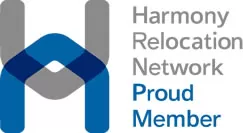
Have you ever heard of a “Letter of Acceptance”? If you intend to do an exchange, whether for a master’s degree or a doctorate, in a foreign university, you’ll need this document that represents no less than your acceptance to the desired course. Offered by the future advisor of the project, and approved by the university, the letter is your ticket to enter the exchange, obtained, of course, after your declaration of intention to the one that will guide your project, as well as by sending the documents required by the teaching institution. That is: the main tip for your candidacy is to know all about the information in the notice about the criteria of the advisors and the documentation required by the place of your choice.
Do not forget to respect the deadline for sending the documents, which is primordial, and be very specific about the necessary documents, since the lack of one of them is eliminatory, and there are hundreds of candidates for the scholarship you are aiming for. But let’s go on to another important factor, by detailing the letter of acceptance and differentiating the one provided by professors/advisors from the one produced by the teaching institutions. Not every university requires a letter of acceptance. On the other hand, every potential future advisor needs one to accept projects and students.
For the master’s degree, the letter of acceptance is provided by the university, after the admission process that requires the filling in of forms , letters of motivation and recommendation, as well as translations of documents separated in apostilles, which are documents universally required for a post-graduation. Don’t hold your breath: the arrival of a letter of acceptance and ticket for the next stage takes at least about 2 months. That means: Don’t leave anything for the last minute, or you may miss the deadline for matriculation to the desired scholarship.
On the other hand, for the doctorate, the contact is more personal. It is important that you become known to the professor/advisor. Pay attention to details: especially the notarized translation of documents. This includes your diplomas and academic histories. Be prepared for the IELTS and TOEFL, the most accepted for validating your English. They are not optional, they are a pre-requisite. A translation is also needed for the Research Project, Letter of Recommendation, Letter of Motivation, and Curriculum. An updated Linkedin is an excellent way to know the advisors and, later, in a formal e-mail, to present your wish to have your project guided by them.
It is basic for you to seek advisors that develop projects and research in the same area that you intend to specialize in, because, otherwise, you won’t even be considered. Do careful research beforehand, to avoid burning your bridges. Another important tip: do not restrict yourself to only one choice. The ideal is to send letters of interest to more than one university/advisor, and thus widen your chances and, with luck, be able to choose the one that best fits your plans and expectations as a student.











